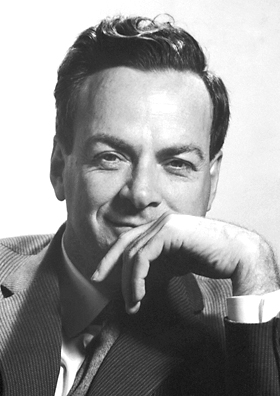Quantum Field Theory
- Introduction to Quantum Mechanics
- Wave-Particle Duality
- The Schrödinger Equation
- Quantum Operators and Measurement
- Quantum Mechanics of Systems
- The Dirac Equation
- Introduction to Quantum Electrodynamics (QED)
- Path Integrals and Quantum Mechanics
- Symmetries in Quantum Field Theory
- Quantum Chromodynamics
- The Higgs Mechanism
- Quantum Field Theory in Curved Space-Time
- Quantum Cosmology and Conclusion
Path Integrals and Quantum Mechanics
Feynman’s Approach to Path Integrals in Quantum Mechanics

American theoretical physicist (1918–1988).
Richard Feynman, a renowned physicist, made significant contributions to the field of quantum mechanics. One of his most notable contributions is the path integral formulation, also known as the sum over histories. This approach provides a unique perspective on quantum mechanics and has been instrumental in the development of quantum field theory.
Introduction to Richard Feynman
Richard Feynman was an American theoretical physicist known for his work in quantum mechanics, quantum electrodynamics, and particle physics. He was awarded the Nobel Prize in Physics in 1965 for his contributions to the development of quantum electrodynamics. Feynman's approach to quantum mechanics, particularly his path integral formulation, has had a profound impact on the field.
Feynman's Path Integral Formulation
The path integral formulation of quantum mechanics is a description of quantum theory that generalizes the action principle of classical mechanics. It replaces the classical notion of a single, unique trajectory for a system with a sum, or integral, over an infinity of all possible trajectories to compute a quantum amplitude.
This approach is also known as the "sum over histories" method. Each path or history has a probability amplitude, and the final amplitude is obtained by summing over all possible histories. The paths that contribute most to the amplitude are those that are close to the classical paths.
The Role of Path Integral in Quantum Mechanics
The path integral approach provides a way to understand and calculate quantum mechanical phenomena. It offers a direct and intuitive understanding of quantum mechanics based on the principle of least action. It also provides a powerful method for calculating quantum mechanical effects, especially in quantum field theory.
The path integral formulation is particularly useful in quantum field theory, where it has been used to calculate the behavior of quantum fields and particles. It has also been instrumental in the development of string theory, a theoretical framework that attempts to reconcile quantum mechanics and general relativity.
In conclusion, Feynman's approach to path integrals has been a significant contribution to quantum mechanics. It provides a unique perspective on the quantum world and has been instrumental in the development of modern theoretical physics.